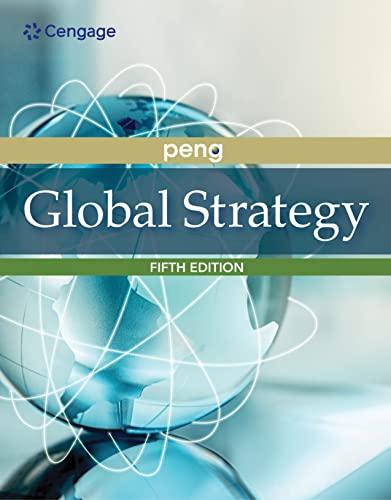Question
Case Study: Ambassador - Riches to Rags - Is competition the Culprit? The Indian automobile industry exhibited distinct phases of growth which were a) pre-independence,
Case Study: Ambassador - Riches to Rags - Is competition the Culprit? The Indian automobile industry exhibited distinct phases of growth which were a) pre-independence, b) pre-librearalization - before 1991, and c) post-liberalization - after 1991. These phases marked distinct change across almost every industry in India, the automotive industry being one of them. In the first phase, pre-independence, decisions about the Indian automotive market largely reflected colonial decision-making. Foreign subsidiaries of established American and European carmakers literally owned the market. The quality of products they offered was generally poor. Completely knocked down (CKD) kits were shipped to India and assembled into vehicles to supply the domestic market. Post-Independence, the government's intent was to indigenize the Indian automotive market (establish local ownership over it). However, that phase was marked by persistent marginal quality of vehicles regardless of supplier.
Post-liberalization, the veritable flood of much higher quality vehicles from outside transformed the Indian market overnight. The Ambassador car was proof. It was built by Hindustan Motors Limited and based on the British Morris Oxford had dominated the Indian market. It perished within 13 years of liberalization. Even its limited exports to neighbouring countries like Pakistan, Bangladesh, Sri Lanka, Myanmar, and some Middle Eastern markets could not save the car. Those markets too were then getting the same superior products. For Hindustan Motors to survive, it had to join the trend of aligning with strong foreign players and creating and delivering superior products for the Indian market.
Questions: 1. Did the demise of the Ambassador represent any specific form of globalization? 2. Given the Indian government's emphasis on indigenization for more than three decades, did the transition into the post-liberalization period reflect a failure of that earlier government intent? 3. Looking at the transformation of the Indian automotive market, does it more closely reflect one or the other of the Globalists' or the Anti-globalists' arguments?
Step by Step Solution
There are 3 Steps involved in it
Step: 1

Get Instant Access to Expert-Tailored Solutions
See step-by-step solutions with expert insights and AI powered tools for academic success
Step: 2

Step: 3

Ace Your Homework with AI
Get the answers you need in no time with our AI-driven, step-by-step assistance
Get Started


